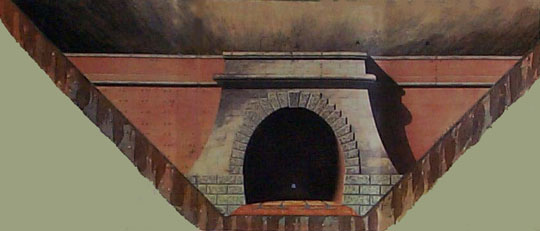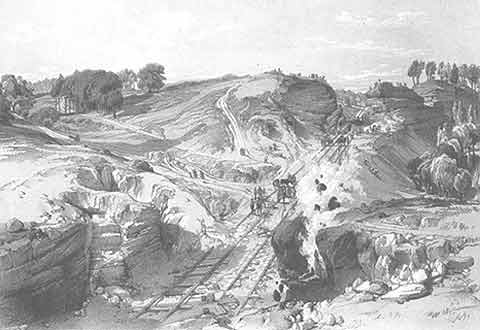|
 |
 |
 |
 |
 |
 |
 |
 |
 |
 |
 |
 |
 |
 |
 |
 |
 |
|
His first task was to search for the best route between London and Birmingham. During the survey for the London and Birmingham Railway it is said that he walked twenty times between the two cities. Having worked out the route, changes then had to be made to allow for strong opposition from local landowners and corporations. He met opposition in Leighton Buzzard from the local shop owners, as his plan had been to build the Station in what is now Church Square. Due to this opposition the Station was sited at Linslade away from the town. Deeds from the sale of the land state that the Land was purchased from H F Clinton, E Lawford, J Grant, C Reeve, The Earl of Chesterfield, L Cotching, J Turney to enable the track, station and sidings to be built. The tunnel had to be dug through Jackdaw Hill (near Knaves Hill). |
|
|
 |
|
|
|
|
|
|
|
|
Mr R V Willis talking about the siting of the railway track |
 |
|
|
|
|
|
 |
|
|
|
 |
|
 |
|
|
|
|
|
|
Actual Engineers Design Drawings for Linslade Tunnel (through Jackdaw Hill) |
|
|
|
|
 |
|
|
|
|
|
|
|
Mr V Willis talking about Linslade Tunnel |
 |
|
|
|
|
|
 |
|
|
|
The 112 miles of railway from London to Birmingham took five years to build using 20,000 men. The men came from nearby towns and villages, and were often farm workers, when they first started they were paid Two Shillings (10p) a day. While Sir Robert was paid £1,500 per year. The total wage bill was £4,000,000!. The total cost of the railway being £5,500,000.00 (£50,000.00 per mile!). |
 |
|
|
|
|
 |
|
|
 |
|
|
|
|
|
Rocks being blasted at Linslade in October 1837
( Picture taken from J C Bournes book Drawings of the London and Birmingham Railway, with permission of David & Charles Publishers)
|
|
|
|
 |
|
|
The building of the railway was very difficult as it had o be as level as possible. To build the railway 25,000,000,000 cubic feet of material was lifted one foot high. All this work was carried out by navvys (labourers/workers) and horses. To complete a days work each man was expected to lift Twenty (20) tons of earth by shovel! |
 |
|
 |
|
|
|
|
|
 |
|